
East Buffalo School about 1905 |
Sweetwater School, 1914 |
| Back to the Index | HISTORY OF EDUCATION IN GRAHAM COUNTY | Back to the Index |
The early history of education in Graham County is sketchy and incomplete. Few schools were found and most children lived too far away to attend the three or four monthís session during the early fall. Schoolhouses were of logs, with no windows, and seats were made of spilt logs without backs. For years there was a high degree of illiteracy in the county. Probably more people could not read and write than could.
The small, one teacher school was the rule and not the exception in the county. Each community had at least one and usually two of these one-teacher schools. The schools seemed to be very similar from one community to another.

East Buffalo School about 1905 |
Sweetwater School, 1914 |
The typical school consisted of from 20-30 students varying in age from 6 to 16. Grades were never mentioned. The reader book that had been reached identified the level of progress. The teacher would announce the particular book and all in that book would come forward. The student usually showed his mastery of content by some type of memory recitation. The three Rís constituted the main curriculum with history and geography often added. Cross spellings were common using the old blue back speller or the Harrington speller.
Students often had individual slates to work on. Those without individual slates would go to the front and use the slate board. School opened with prayer and discipline was not neglected. The boys cut wood for heat as cold weather approached. The teacher always tried to complete the term before Christmas. The pupils took their own simple lunch to school with them, sometimes having to fight off the hogs in order to eat. Some old timers recalled that three of the greatest problems confronting the early school were lice, itch, and fleas.
The teacher lived in the community and received twenty-five dollars a month salary, usually paying $5.00 per month for room and board. Some of the early teachers taught in many different communities. Among those early teachers to whom special tribute should be given are Captain N.M.E. Slaughter, Sid Rose, and T.A. Carpenter. To attempt a history or even a listing of the one teacher schools and/or teachers would be an endless task. The school sites changed often as population shifted, and depended upon available building space.
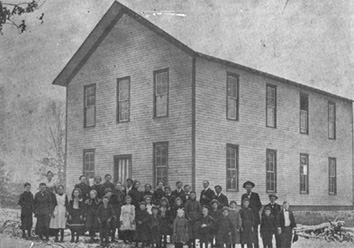
Robbinsville Public School, 1900
It is possible that our one-teacher schools had more strength than we usually concede. Recent educational research emphasizes the need for a non-graded approach, individualized instruction, multi-age grouping, and a plan for continuous progress through the year. The one teacher school had all of these.
By 1881 the county had seventeen public schools, obviously all one-teacher affairs. Later the county had as high as twenty-two. The last one-teacher school was the Cable Cove School discontinued when Fontana Lake covered the area in the early 1940ís.
Before 1890 there was a very small schoolhouse in Robbinsville located about where the Old Masonic Building now stands. In 1894 the school Committee for Robbinsville district realized the need for a larger school building and decided something needed to be done. There were no public funds available at this time. Schoolhouses in small settlements at that time were built by subscriptions by citizens. In 1894 the Masons were holding their meetings in the general store of J.B. Walker. The Masons met with the Robbinsville School Committee at the second meeting of the school committee of that year and decided to put up a building with the Masons occupying the second floor and the school occupying the first floor. In 1897 the building was finished but the building was actually used for a school before completion. Primary grades occupied one section of the building. It had no partitions curtains were used as room dividers and painted planks were used for blackboards. The Robbinsville School used this building for a public school until 1909.
In 1909 the school board decided to buy the Presbyterian school building, which was no longer in use as a school, from the Presbyterian Board of Missions. Three grades were added at the time. The first graduation exercises were held in the Courthouse. Later the old school building was sold to J.J. Snider for a store. The Masons continued to use the upstairs for their meetings.
About 1876 Professor Lycurgus Mauney had opened a school in the Courthouse of Robbinsville known as the Peabody Institute. Miss Clara Mauney, a sister of Professor Mauney, assisted as a teacher. Professor Mauney had graduated from the University of North Carolina in 1879 and practiced law for ten years in Murphy. He could teach practically any subject including Latin, Geometry, and Astronomy. Students flocked to the school from other adjoining counties, some boarding as far as 5 miles from the village.
This school could also boast of a teacher of music and elocution who had come from Knoxville, Tennessee. Mr. Phidellia Harwood of Sweetwater Community, owner of the first piano in Graham County, loaned his piano to the Peabody Institution for these special classes. The county commissioners gave permission for use of the courthouse for instruction for a period of three months and renewed permission afterwards. Professor Mauney received no fixed salary but depended entirely upon the small subscription fees charged his pupils and the amount appropriated by the Peabody Board of Directors.
George Peabody of Massachusetts was an educational philanthropist who spent millions of dollars during the 1860ís and 70ís to improve educational conditions in the Southern states. It was the policy of the Peabody board of directors to cooperate with state and local school authorities promoting public education and stimulating local self-help and community effort. The board provided that the community given aid should raise, by subscription or otherwise, twice as much as the Peabody appropriation. These so-called Peabody schools were organized and conducted here and there throughout the country districts of the state.
The requirements for a teacherís certificate in those early days were very meager, requiring only an eighth grade diploma. However, the legislature of 1889 made provisions for a state teachersí institute of one week or more to be held in each county of the state. The institutes were not held in Graham County every year due to the small number of teachers, only every 4 or 5 years. Teachersí institutes were taught in Robbinsville by T.A. Carpenter, John Harwood, Guy Houck, and one as late as 1914 by Dr. Highsmith of the Raleigh Office.
The school term was short, being only four months in the early years of the county and gradually increasing until a term of 152 days was offered in 1929. Not only were the teachers short on training and work days but equally low in salary, with earnings of $65 or $75 per month as late as 1932. However, the strong impact of these salaries on the economy of the county was reflected in the following special news item from Robbinsville in the Asheville Citizens November 19, 1932. "The state school board and the county accountant are busy signing vouchers for the teachers, truck drivers, and janitors in the schools at Robbinsville, Stecoah, and Tapoco. The amount of the payroll for this month is in excess of $4,500 and will greatly benefit the county when this gets into circulation within the next few days."
The Robbinsville Academy was a prestigious institution with high standards, operating from 1901 to 1911. In 1896, a very great devout Minister, Dr. R. P. Smith, resigned from his position as President of Presbyterian College at Clinton, South Carolina to become the Superintendent of Home Missions for the Presbytery of North Carolina. He was the leader in the movement that resulted in the organization of the Asheville Presbytery out of the western counties of North Carolina. Dr. Smith labored for many years in establishing mission schools and orphanages in western North Carolina.
Widespread interest in a public school system for all sections in the state had not been developed before the turn of the century. In Graham County there were several one or two teacher schools with the curriculum extending only through the sixth or seventh grades. There were no high schools.
A visit from Dr. Smith to Graham County convinced him of great need for a mission school here. He obtained permission from the leaders of the county to buy land. In 1901 the Robbinsville Academy became a reality. The Presbytery Board soon provided additional money for girls dormitory.
The combination school and church building was erected where the New Masonic Building now stands. The girls dormitory was built in the architectural style of that period and occupied the hill were Joyce Kilmer Cottages were later built.
Presbyterian Church and School
|
Teacher's Institute at Robbinsville School, 1912
|
Art Class at the Presbyterian school |
Presbyterian School dormitory for girls |
The school building contained five large classrooms, and an auditorium, which was used for religious services on Sunday. A full time pastor, Mr. Eversole, was employed. There were piano and voice teachers, art and dramatic teachers, in addition to the regular high school teachers.
One of the first teachers to come to Robbinsville to teach in the Academy was Miss Helen Bales (Later Mrs. Bruce Slaughter). Two of the many advantages of the school were free tuition and its admission to the school of pupils regardless of any religious denomination. The enrollment varied from 337 to 350 each year. By 1911 North Carolina had at last awakened to the need for a real public education system. The Presbyterians sold the Robbinsville Academy to the State Board of Education.
The building served as the Robbinsville High School with a curriculum through the tenth grade until 1924, when the school was moved to a new campus. (The Old Rock Building) In that year Robbinsville High School became an accredited school with eleven grades and enjoyed the distinction of owning four school buses.
Robbinsville Elementary School, 1924
|
Wings were later added to the 1924 building
|

Graham County schools first busses, with drivers Clyde Crisp, Barney Walters, and Bob Roberts |
Robbinsville School faculty 1928-29 |
The minutes from an August 4, 1924 meeting states that four buses were purchased for transporting pupils for the school year 1924-25. The first drivers elected were Verlie Maxwell, Clyde Crisp, Barney Walters, and Bob Roberts. Evidently Verlie Maxwell did not accept, as the minutes from September 11, 1924 list Bob Roberts, Curtis Eller, Clyde Crisp, and Barney Walter as the drivers, and they were to be paid $40.00 per month. Many different makes of trucks were used as buses in those early years. Among those listed as being used were Indiana, Reo, International, Menomonee, and Ford.
The first Public High School in Graham County was founded at Robbinsville during the 1924-25 school year. It was operated as a Union School until the 1966-67 school year when the school was separated into an Elementary and High School with a principal for each.
Old High School Gym, now the elementary gym
Stecoah Union School was founded the 1928-29 school year. The original building at Stecoah was burned on December 27, 1930. The building was a total loss and reconstructed on the same site in 1931.
Mountain View School was founded in 1953. It was operated only as an elementary school the 1953-54 school year. Beginning with the 1954-55 school year a high school was also included.
Mountain View School |
Stecoah School |
Today all of Graham County's schools are consolidated into one district. The high school in now housed in a new high tech building along with a middle school, and new additions have improved the elementary facility. And Graham County residents now have the added ability to attend college level classes at a satellite campus operated by Tri-County Community College.
Old rock high school building and current elementary school. Right, the new Robbinsville High and Middle School building |
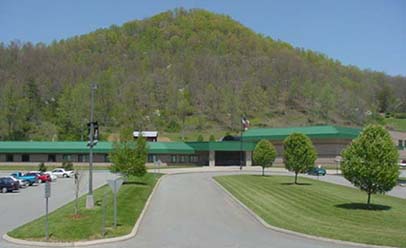 |
Throughout its history our county has been blessed with devoted teachers from the time of N.M.E. Slaughter and Sid Rose to the present. Our schools can only be evaluated by the young people who pass through our doors, the devotion of teachers who impart our values and heritage to the next generation, and the dedication to the educational leadership in our county. Our schools are now in the hands of Graham Countyís own products, people whose ties go deep into our past. Our county too has furnished educators of the highest caliber to other areas of our state and nation: Dr. Phillip Elliot, Dr. Gerald Eller, Dr. Jeff Davis, Dr. Lawrence Stewart, and others too numerous to list. The educational foundations laid in early years gave a sound footing on which to build as our schools continue to come of age.
Past Superintendents of Graham County Schools

Thomas A. Carpenter, 1903-14
|

J. H. Moody, 1914-29, 31-41
|
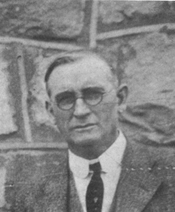
R. C. Barrett, 1929-31
|
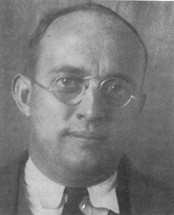
F. S. Griffin, 1941-53
|
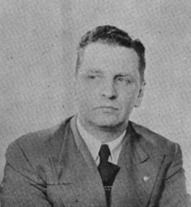
K. S. Clem, 1953-55
|
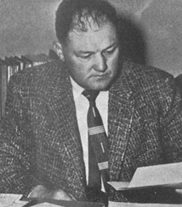
R. Guy Sutton, 1955-59
|

James A. Stanley, 1959-63 |
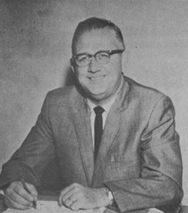
Kenneth S. Barker, 1963-69 |
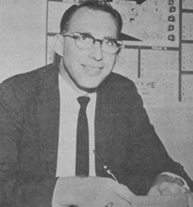
Modeal Walsh, 1969-82 |
Subscription list for Robbinsville School, 1894